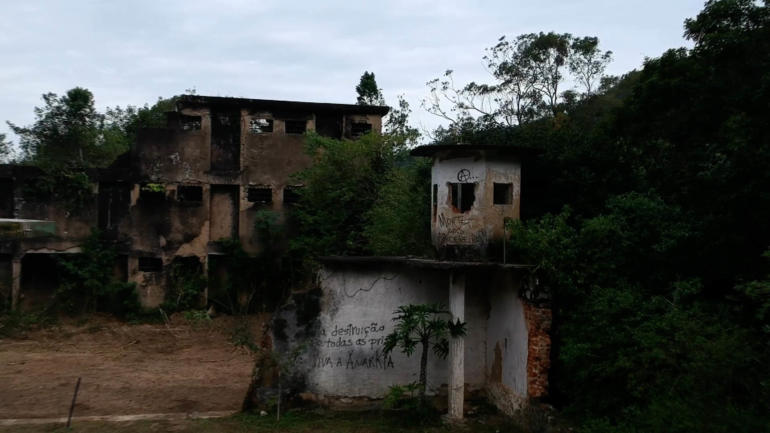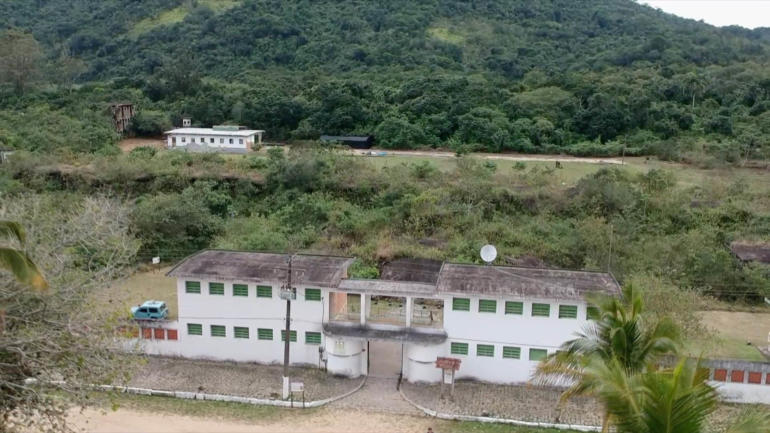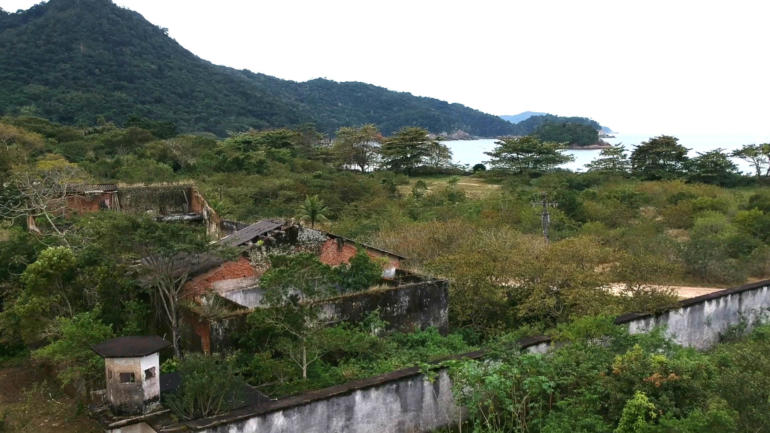Part of the CGTN special series Rediscovering the New World
Ilha Grande is a tropical island off the coast of Rio de Janeiro popular for its pristine beaches and untouched forests. It’s also known for the infamous prison used in the 1960s and 1970s to hold the enemies of the military leadership.
It was shut down and partially demolished in 1994. What’s left standing is now a museum dedicated to the memory of the prisoners once held here.
Former member of Parliament Fernando Gabeira was one of them – jailed and tortured in 1970, a couple of years after his armed leftist group kidnapped American Ambassador Charles Elbrick and successfully exchanged his life for the release of 15 political prisoners.
Ambassador Charles Elbrick interview following his kidnapping in 1969
Gabeira told the story in the book “O que é isso companheiro?” – “What’s this, Comrade?” -later made into a movie, “Four Days in September.”
Trailer: O que é isso companheiro / Four Days in September
Gabeira himself was released from jail a few months later in exchange for a kidnapped ambassador from Germany and went into exile. Upon his return in the early 1980s – after amnesty and near the end of military rule – Gabeira founded Brazil’s Green Party and went into politics.
“People in certain situations, when they are satisfied economically and they have a comfortable life they tend not to care so much about authoritarianism of the government. And this is dangerous”, said Gabeira.
During Brazil’s Military Regime the Ilha Grande Penitentiary was mostly destined to hold political prisoners. But over the years common criminals, particularly bank robbers, were also sent to this place. And this has a lot to do with that creation of what’s considered the first of organized crime group in Brazil. The Comando Vermelho – the Red Command.
Common criminals ended up here because the regime decided to prosecute bank robbers on the basis of the same law used against members of armed anti-government groups deemed terrorists.

Contacts between political prisoners and common criminals in Ilha Grande are at the origin of the creation of Brazil’s first organized crime group, the “Comando Vermelho”, Red Command.
The Museum Director, Gelson Rozentino, explains that Brazilian political prisoners adhered to a formal structured organization on the inside – one that common criminals later joined.
“Ilha Grande is an important symbol. As a prison, it’s a place that brought together a paradise and much violence. This is what this place will be remembered for”, said Gelson Rozentino.
“It was the main political jail during the military dictatorship but as political prisoners left the place over the year, common criminals took over their organization and maintained it afterwards.”

Contacts between political prisoners and common criminals in Ilha Grande are at the origin of the creation of Brazil’s first organized crime group, the “Comando Vermelho”, Red Command.
Fernando Gabeira also has memories of the interaction between common and political prisoners.
“As we had to survive in the jail we made a kind of school trying to teach history, to teach things like that. It helped them to in a certain way understand the history of the country”, said Fernando Gabeira.
“But they are very smart and they were not influenced by us. They took from our vision what interested to them and they tried to apply it in practice.”
EXTENDED INTERVIEW: Fernando Gabeira speaks about Ilha Grande Penitentiary
At first the organization focused on fighting for prisoners’ rights inside the jail and helping them scrape together funds and resources from the outside. But over the years the Red Command became a vast criminal organization outside prison walls – rooted in Rio’s Slums and controlling much of its drug dealing.
William da Silva is the last surviving founder of Comando Vermelho – now serving house arrest due to age and poor health. The former bank robber and Ilha Grande prisoner wrote the book 400 X1 – also made into a movie – to tell the story of the prisoners’ organization that gave rise to the first – but hardly the last – big drug cartel and criminal organization in Brazil.

William da Silva is a former Ilha Grande prisoner and last surviving founder of the “Comando Vermelho”. He wrote “400 X 1” to tell the story of the creation of the group and of his time in different Brazilian jails.
“That’s the game. The powerful didn’t want just one organization. Divide and rule. That’s what Machiavelli said. So, those who played their game began creating other factions. There was the Third Commando, the Friends of the Friends group… All worse than the Red Command. This is all capitalistic competition”, said William da Silva.
Trailer: 400 X1
Brazil’s military rule lasted more than 20 years – from the coup in 1964 to the return of a civilian government in 1985. Much of its impact on Brazilian politics and society remains today.
 CGTN America
CGTN America
 Ilha Grande – off the coast of Rio – was used as a prison island from the 19th century to 1994 when the last penitentiary there was demolished.
Ilha Grande – off the coast of Rio – was used as a prison island from the 19th century to 1994 when the last penitentiary there was demolished.

